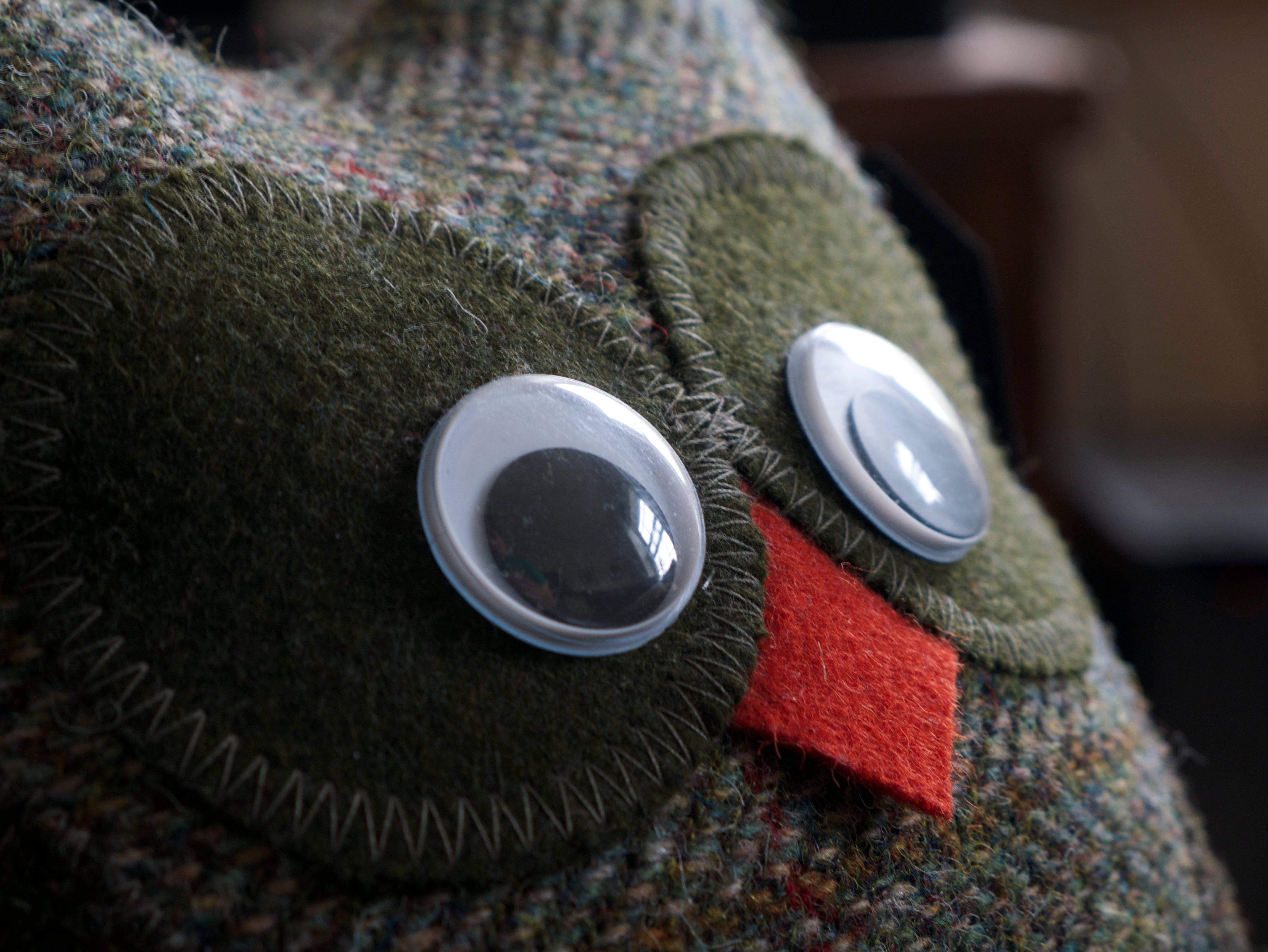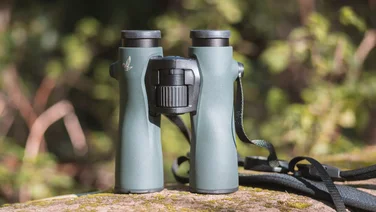To help us provide you with free impartial advice, we may earn a commission if you buy through links on our site. Learn more

We were seriously impressed when Sony introduced its Smart Lens concept last year. The Sony QX10 and QX100 promised to give your smartphone a significant image quality upgrade, but in practice we found them a little too sluggish for daily use – see our full Sony QX10 review. Sony has tweaked the formula for this year’s show, introducing the QX1. It’s a refined design that aims to fix the issues we had with the original, plus provide a lot more flexibility thanks to its interchangeable lens mount.
Like its predecessor, the QX1 is essentially the guts of a digital camera (lens, sensor, image processor and battery) squeezed into a unit the size of a lens barrel. While the QX10 was based around a basic compact camera, and the QX100 around the premium RX100, the new QX1 is the little sibling of Sony’s brilliant Alpha CSC range – such as the Sony Alpha A6000 and A5000.
Naturally it’s larger than its predecessors to accomodate the Sony E Mount interchangeable lens mechanism, but even with a fairly typical 16-50mm power zoom lens attached it’s still impressively compact.
DESIGN
Sony has squeezed as many physical buttons and connections onto the QX1 as possible without increasing its physical size. As well as a power button, you get a physical shutter and a button to pop up the built-in flash, plus a tiny LCD display on the side which shows power, Wi-Fi and whether or not you’ve inserted an SD card.

The fold-out arms on the back of the camera clamp it to your smartphone, so it can be used in a traditional two-handed grip, but because the connection is wireless you can hold the camera in one hand and your phone in the other. That means it’s far easier to shoot at more interesting angles – and to get the camera in little nooks and crannies. It has a tripod thread on the bottom of the camera, which is excellent when paired with a Gorillapod or compact tripod, letting you control the camera from a distance with your phone.
A wrist strap is included in the box to make sure you don’t drop the camera, but Sony has also introduced two optional grip accessories to make it even easier to hold. The first is a handheld grip that lets you hold it at one end, while the second is a rotating grip that lets you tilt an attached smartphone for shooting above your head or low to the ground.
GET CONNECTED
You have to pair the QX1 with an Android or iOS smartphone using the free PlayMemories app to get started. Android devices can tap to connect with NFC, while iPhone owners have to connect manually, but either way Sony has sped up the pairing process from the QX10. We got connected in around 3 seconds, down from seven in the QX10; it’s a big improvement, but still not as quick as simply pulling out your smartphone for a quick snap.
Once a Wi-Fi direct connection is established, you use your smartphone’s screen to frame your shots, control exposure settings, zoom and activate the shutter. Photos are saved directly to the memory card inside the camera, but can be automatically uploaded to your smartphone for quick sharing.

The Wi-Fi connection is very responsive, with only a small delay between pressing the onscreen shutter button and the camera taking a picture. The Live View display was smooth and has very little visible lag, which makes it easy to frame shots with no danger of overcompensating for your hand movement. If you aren’t shooting remotely, you can use the physical shutter and zoom controls on the camera itself for even more responsive shooting.
The PlayMemories app has been updated significantly since we reviewed the QX10, with plenty of added features that let you control shutter speed, aperture, ISO sensitivity and white balance. Sony has also added RAW shooting and continuous burst with the QX1, expanding its advanced capabilities over the original Smart Lens models.

POWER UP
The QX1 has a rechargeable battery that should be good for up to 440 shots on a single charge, and throughout our testing we never depleted it entirely in a full day of shooting, but the bigger issue is how your smartphone handles the extra use. A heavy day of photography does have a noticeable impact on battery drain, and if you regularly find your phone running out of juice then the QX1 certainly isn’t going to help matters. You can still take photos when disconnected, but with no viewfinder you won’t know if they were properly framed until you copy the images to your phone or a PC – though you can get surprisingly good at simple snaps (landscape shots particularly) without the guidance of a screen.
The QX1 uses Sony’s 20.1-megapixel APS-C sensor, found in the Sony Alpha A6000, which is a big improvement over both previous models and a huge step up from the tiny sensors found in most smartphones. Even without the pop-up flash it should be able to cope with low-light situations well.
IMAGE QUALITY
We’ve compared the QX1 to the Samsung Galaxy S5, which is still one of the best smartphones on the market when it comes to camera image quality. Because the QX1 takes 20-megapixel images, direct pixel-to-pixel comparisons with Samsung’s 16-megapixel Galaxy S5 will be tough, but still give you an idea what benefits an external camera attachment can bring. We’ve also pitted it against a Panasonic GX7 compact system camera, which uses a smaller micro-four thirds sensor; theoretically, the QX1 should be able to capture more details.

^ The QX1 is able to create depth blur and capture plenty of close-up detail, with no signs of noise or pixellation until you zoom in significantly

^ The Galaxy S5 appears to use aggressive sharpening when processing images, so they appear crisper on first glance, but zooming in reveals excessive noise and a lack of detail.

^ The GX7 produces very similar results to the QX1, revealing noise a little sooner than Sony’s smart lens when you zoom in. Colours and detail are essentially on par with the APS-C sensor, however.
Moving outdoors, the QX1 does a great job capturing lifelike colours and balancing exposure. Whereas the Galaxy S5 has to use its HDR mode to capture both sky and foreground, the QX1 is able to do so in a single exposure – without oversaturating colours to boot. In the image below, the Galaxy S5 makes it look as though the skies were particularly moody, but the QX1 appears much more true to life.

^ Sony QX1 (left), Samsung Galaxy S5 (middle), Panasonic GX7 (right)
Sony has added a pop-up flash to the QX1, which gives it a major advantage over the QX10 when it comes to low-light shooting. It’s not huge, but it’s also a lot more powerful than the average smartphone camera flash, which is clear to see in our test shots.

Even in a dark room, the QX1 managed to capture a surprising amount of detail, although you’ll see massive improvements when you use the built-in flash (below).

The Galaxy S5 struggles to find focus in the dark, and even when it does the results aren’t usable. There’s almost no detail, particularly in the second row of objects, and there’s a huge amount of noise. Switching on the flash improves things significantly, but zooming in again reveals pixellation and noise, as well as overly saturated colours. The QX1 does a better job at producing lifelike images.


CONCLUSION
Sony has improved its Smart Lens concept in almost every way with the QX1; it’s faster to connect, produces higher quality images and has more manual features, before you even take into account the option to swap lenses. If you have an existing collection of Sony E Mount lenses, it’s an intriguing alternative to a standard body, one which should inspire you to get more creative with your photography.
The QX1 is currently available standalone or ‘body-only’, we contacted Sony but at present there are no plans for a kit with a lens announced. At £250 it’s around the same cost as an A5000 body, which doesn’t feel quite right given that the QX1 is essentially a cutdown device with no screen. Worse still, the A5000 can currently be bought with a 16-50mm kit lens for as little as £289 from John Lewis. With no lens offer on the QX1 that leaves it looking rather expensive indeed, as the lens itself will cost around £100 even from eBay.

Then there are the shortcomings that make it more of a novelty than a replacement for a compact camera; copying full resolution files from the camera to your smartphone after each shot takes several seconds and unless you’re pairing it with a budget handset many images won’t look drastically different once uploaded to Facebook or Instagram (though you will of course have a far higher-quality images to archive). Having to pair and connect your phone every time you want to shoot is just enough effort to make you think twice about using it instead of the camera built into your phone.
The addition of interchangeable lenses may provide flexibility, but the lack of a bundled lens makes the QX1 even more of a niche product than the first-generation Smart Lenses, and the long list of improvements don’t change that. It’s certainly intriguing, but we can’t see it appealing to anyone except for existing Sony NEX/Alpha CSC users looking for something a little different.
| SPECIFICATIONS | |
|---|---|
| Sensor resolution | 20.1 |
| Sensor size | APS-C (23.2×15.4mm) |
| Focal length multiplier | 1.52x |
| Viewfinder | N/A |
| LCD screen | No |
| Optical zoom (35mm-equivalent focal lengths) | 3.1x (24-76mm) |
| 35mm-equivalent aperture | f/5.32-8.51 |
| Lens mount | Sony E Mount |
| Weight | 216g |
| Size (HxWxD) | 74×69.5×52.5mm |
| Warranty | One year RTB |
| Details | www.sony.co.uk |






